Fall 2011 Schedule
September 13, 2011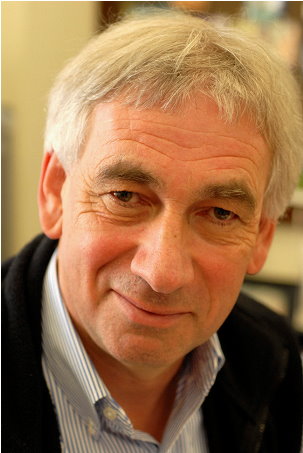
Richard Ellis,
Caltech
Hosted by
Wei-Hao Wang
Time: 2:20 pm -3:10 pm
Place: Room 104, CCM-New
Phys. building
Title:
The Quest for the First Galaxies
Slides
Abstract
A few hundred million years after the Big Bang, the hydrogen in deep space was ionized into its component protons and electrons. Theorists speculate this landmark event was caused by the birth of the first galaxies. Can powerful telescopes, probing back in cosmic history, directly witness this event? Large telescopes have already traced the evolutionary history of galaxies back to when the Universe was 1 billion years old. The first results from the Wide Field Camera 3 onboard Hubble Space Telescope give a glimpse at primitive stellar systems at yet earlier times. The lecture will address the progress and challenges of this fundamental quest for our origins, and discuss the future prospects with the next generation of 30 meter aperture ground-based telescopes.
Brief Bio
Ellis教授是觀測宇宙學權威,其在星系的行成與演化以及宇宙論的研究,奠定了此領域今日的樣貌。Ellis教授獲獎無數,包括英國皇家學會院士、大英帝國勳章,以及眾多天文學與宇宙學獎章,曾任加州理工光學天文台台長、帕洛馬天文台台長,現為加州理工教授,正領導建造世界最大的30 m天文望遠鏡,以及為解開暗物質之謎的各種太空與地面計劃。本演講Ellis教授將深入淺出地介紹天文學家如何探索宇宙中最遙遠的星系,以及其在宇宙的再游離過程中扮演的角色。
September 27, 2011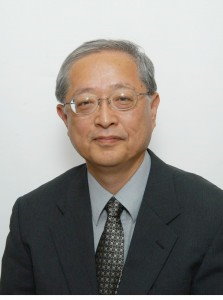
Seiji Isoda,
Kyoto University
Hosted by
Jer-Lai Kuo
Time: 2:20 pm -3:10 pm
Place: Room 104, CCM-New
Phys. building
Title:
Molecular Structure Imaging and
Site-resolved Analysis by Cs-corrected STEM
Slides
Abstract
Aberrations in electron microscopic lenses were essential limiting factors to make real atomic-scale analysis by electron microscopy difficult. However, recently, the spherical aberration correction was devised and opened a new phase in structure analysis by electron microscopy. Ultra-high resolution imaging of a molecular structure and an atom-site-resolved electron energy-loss analysis will be demonstrated in case of scanning transmission electron microscope with an aberration corrector.
Brief Bio
Prof. Isoda is an internationally known researcher in transmission electron microscopy (TEM). His main research interest is in microscopic analysis of thin films, fine particles and organic crystals, and their relations to structural transformations. Prof. Isoda obtained his Ph.D. from Kyoto University in 1983. He was a Humboldt fellow at Max-Planck-Institute of Polymer Science. He served as the Director of Advanced Research Center for Beam Science, Institute for Chemical Research, Kyoto University from 2005 to 2007. He also served many important positions in Japan and worldwide. In 2010, he retired and became an emeritus professor of Kyoto University. He is currently a visiting professor at iCeMS, Kyoto University.
October 4, 2011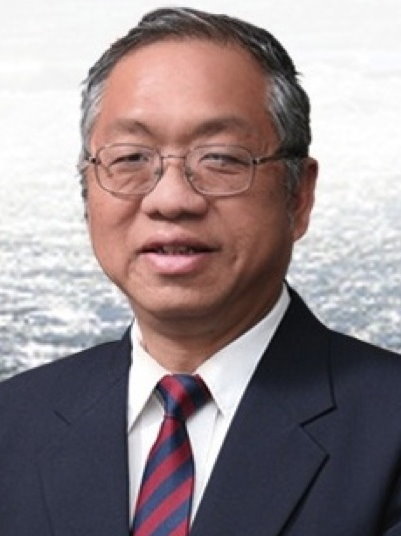
Shing-Tung Yau,
Harvard
Hosted by
Pei-Ming Ho
Time: 2:20 pm -3:10 pm
Place: Room 104, CCM-New
Phys. building
Title:
Math, Physics, and Calabi–Yau Manifolds
Slides
Abstract
I’d like to talk about how mathematics and physics can come together to the benefit of both fields, particularly in the case of Calabi-Yau spaces and string theory. This happens to be the subject of the new book I coauthored, THE SHAPE OF INNER SPACE, It also tells some of my own story and a bit of the history of geometry as well.
Brief Bio
丘成桐教授是世界公認當代最傑出、也最有影響力的數學家之一,他的工作開創了偏微分方程在微分幾何中的意義,革命性的影響了許多數學領域,包括拓撲學、代數幾何、廣義相對論、弦論等眾多數學和物理領域。他證明了 Calabi 猜想、廣義相對論的正質量猜想及弦論的Mirror Symmetry 猜想等重要數學定理。他囊括數學界所有的最高榮譽,包括Fields Medal、Crafoord Prize 以及 Wolf Prize。在本演講中丘教授將告訴我們一個生動的數學和物理之間的交互作用的故事。
October 11, 2011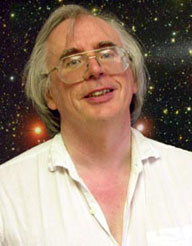
Lennox Cowie,
University of Hawaii
Hosted by
Wei-Hao Wang
Time: 2:20 pm -3:10 pm
Place: Room 104, CCM-New
Phys. building
Title:
Growing Galaxies from Start to Finish
Slides
Abstract
Over the past two decades we have begun to understand how galaxies and their supermassive black holes form and evolve from the earliest times to the present. I will sketch how the development of new facilities in space and on the ground for observing at X-ray, UV/optical, and far-infrared wavelengths has driven this transformation in our understanding. I will also discuss some unresolved problems, such as where the photons needed to ionize hydrogen in the intergalactic gas are produced, why supermassive black holes form so early in the galaxy evolution process, and how much of early galaxy formation is obscured by dust.
Brief Bio
Cowie教授是星系演化觀測的先驅,幾乎在各個波長的巡天觀測都有非常早期的貢獻,其在80與90年代的工作,促成了哈伯太空望遠鏡著名的哈伯深景觀測。Cowie教授曾得到天文界諸多獎章肯定,曾任美國物理學會與皇家天文學會會士,更於2004年獲選為皇家學會院士。Cowie教授將在本演講以深入淺出的方式介紹星系的形成與演化,各位千萬不可錯過。
November 1, 2011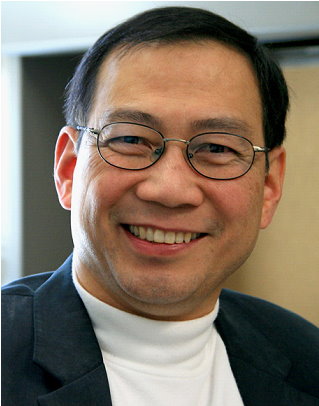
Pisin Chen,
NTU
Hosted by
Jiunn-Wei Chen
Time: 2:20 pm -3:10 pm
Place: Room 104, CCM-New
Phys. building
Title:
Our Runaway Universe -- The discovery
and implication of the 2011 Nobel Prize in Physics
Slides
Abstract
This year’s Nobel Prize in Physics was awarded to Saul Perlmutter, Brian Schmidt, and Adam Reiss for their 1998 discovery that the expansion of our universe is accelerating. This dramatic discovery was soon confirmed by various independent observations. What causes such an accelerating expansion? No one really knows. There have been numerous theoretical proposals for the origin of this unexpected phenomenon, where the substance responsible for it has been generally referred to as ‘dark energy’. Dark energy is a profound mystery as it touches upon many fundamental issues in physics and astrophysics. In 2005, the Science Magazine surveyed more than a thousand scientists from all disciplines to compile the top 150 science questions for the 21st century, and “the nature of dark energy” was voted as the number one question among all sciences. In this colloquium we will review the history of the 1998 discovery and the ensuing experiments that have strengthened this finding. We will then review the different theoretical proposals that attempt to explain this fact, with attention to a few selected models. We will end the talk with a historical and philosophical perspective: would this Nobel-winning discovery trigger the final resolution to bridge the gulf between quantum mechanics and general relativity?
Brief Bio
Prof. Pisin Chen obtained his PhD from UCLA in theoretical particle physics under J.J. Sakurai. He was elected APS Fellow in 1994 for his discoveries of the plasma wakefield acceleration mechanism, the beam self-focusing effect in plasmas and the beamstrahlung coherent pair production process in linear colliders. In 2001 he demonstrated the existence of the black hole remnant at Planck mass and size, which solved the longstanding end-life problem of Hawking evaporation. He is two-time recipient of the Gravity Research Foundation Essay Competition Awards (1995, 2001). He has published numerous papers on the nature of dark energy and dark matter. In 2000 he initiated the Chen Institute, later renamed Kavli Institute, for Particle Astrophysics and Cosmology at Stanford University. He joined NTU in 2007 and has since been the CC Leung Chair Professor of Cosmology and the director of the Leung Center for Cosmology and Particle Astrophysics (LeCosPA). In addition to theoretical work, he is also active in experimentation. He currently leads the Taiwan team in ANITA and ARA projects that search for ultra-high energy cosmic neutrinos in Antarctica, and the UFFO satellite telescope to detect GRB prompt signals. He is the International Co-Spokesperson for the ARA Observatory at South Pole.
November 8, 2011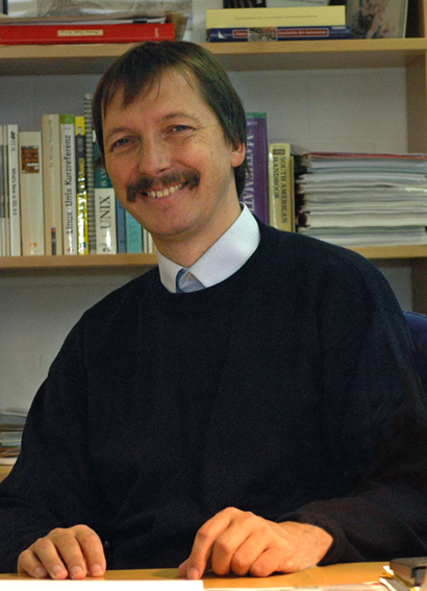
Thomas Henning,
Max Planck Institute for Astronomy
Hosted by
Wei-Hao Wang
Time: 2:20 pm -3:20 pm
Place: Room 104, CCM-New
Phys. building
Title:
Physics of Star Formation
Slides
Abstract
Star formation is a fundamental process in the universe, shaping the structure of our and other galaxies. The talk will summarize the general principles of the star formation process. It will discuss global properties such as the star formation efficiency and the initial mass function. In addition, it will also demonstrate the power of adaptive optics in revealing the structure of star-forming regions.
Brief Bio
Henning教授是以紅外線太空望遠鏡研究恆星與行星形成、原行星盤演化的世界級專家,同時也是透過實驗室瞭解宇宙中的塵粒的先驅。Henning教授是海德堡蒲朗克天文研究所所長,也是德國約拿大學教授。Henning教授是蒲朗克學會會士,為表彰Henning教授對天文的貢獻,小行星30882即以Tomhenning為名。Henning教授將在本演講介紹與恆星形成有關的物理,歡迎大家踴躍參加。
November 8, 2011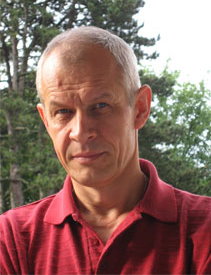
Leszek Roszkowski,
University of Sheffield
Hosted by
Pisin Chen
Time: 3:20 pm -4:20 pm
Place: Room 104, CCM-New
Phys. building
Title:
Dark Matter
Slides
Abstract
After reviewing evidence for the existence of the dark matter problem in the Universe, I will list and discuss some most promising particle physics candidates for its explanation. I will provide an update on prospects for the detection of dark matter and discuss the role that the Large Hadron Collider may play in elucidating its particle physics nature.
Brief Bio
Prof. Roszkowski received his Master’s degree from Warsaw University, Poland in 1981, and his PhD degree from the University of California at Davis in 1987. After postdoctoral positions at Texas A&M, CERN, Michigan and Minnesota, in 1996 he joined Lancaster University as a faculty member. In 2003 he was appointed a Full Professor and the leader of the Astroparticle Physics and Cosmology Group at the University of Sheffield. Since 2009 he has also been employed at the National Centre for Nuclear Research in Warsaw, where he is currently setting up a new particle theory group.
Prof. Roszkowski has worked in the areas of particle aspects of collider physics, astrophysics and early Universe cosmology. His main areas of expertise are search for signatures of physics beyond the Standard Model, especially supersymmetry and dark matter in the Universe.
November 22, 2011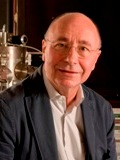
Christian Colliex,
Université Paris-Sud 11
Hosted by
Chih-Wei Chang
Time: 2:20 pm -3:10 pm
Place: Room 104, CCM-New
Phys. building
Title:
From STEM-EELS to Multi-Dimensional and
Multi-Signal Electron Microscopy
Slides
Abstract
Starting a few decades ago as a physicist tool to measure basic excitations in solid thin foils, electron energy loss spectroscopy (EELS) techniques in the scanning transmission electron microscope (STEM) column have now become essential for analytical purpose, extending to the identification of individual atoms. The combination of angström level spatial resolution with an energy resolution down to a few tenths of an eV in the EELS core-loss spectral domain has paved the way to atomic-resolved elemental and bonding maps across interfaces and nanostructures with potential impact in many different fields. In the EELS low-energy range, improved energy resolution has been quite efficient to record surface plasmon maps and from them electromagnetic maps across the visible EM domain, thus bringing a new view to nanophotonics studies. Quite recently, spectrum-imaging of the emitted photons under the primary electron beam and the spectacular introduction of time-resolved techniques down to the fs-time domain, have constituted innovative keys for the development and use of a brand new multi-dimensional and multi-signal electron microscopy.
Brief Bio
Christian Colliex是在電子顯微鏡領域中發展(S)TEM與EELS技術的開拓者。自1960年以來,當人們還對這些知識懵懵懂懂時,他便努力地推展這些技術於微米與奈米尺度的分析工作,以致於今天EELS成了電子顯微鏡中不可或缺的分析工具。Collex多年來於巴黎第十一大學固態實驗室擔任研究員與主持人,現任於法國CNRS research director。近年來,Colliex教授更積極推動與台灣研究機構之交流。其成就已經獲得數項國際性榮譽肯定;包括2005年台法科技獎、2009年Holweck Medal等。此次演講中我們將有難得的機會聆聽一位開拓者對電子顯微鏡的過去與未來做深入淺出的介紹。
November 29, 2011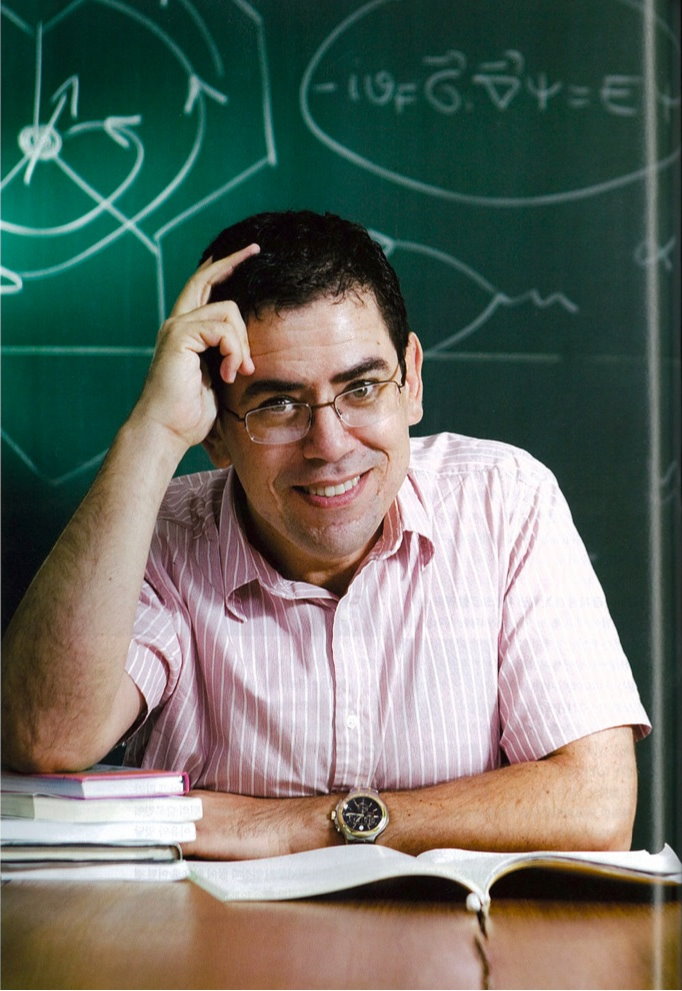
Antonio H. Castro Neto,
Boston University
Hosted by
Ying-Jer Kao
Time: 2:20 pm -3:10 pm
Place: Room 104, CCM-New
Phys. building
Title:
New Directions in Materials Science and Technology: Two-Dimensional Crystals
Slides
Abstract
Smart advanced materials that are flexible (for transparent wearable electronics), adaptable (that change structure depending on exterior conditions), multifunctional (that can be tuned by application of electric and magnetic fields, pressure or strain), and at the same time are environmentally friendly (that do not waste energy and are low power consuming), are the ultimate dream of materials scientists and engineers. Such materials hold the key to the next generation of devices with deep incursions into new markets. The discovery of graphene and other twodimensional crystals in 2004 has finally brought materials with the promise of such properties to light. More importantly, the recent breakthrough in their industrial scale fabrication is paving the way towards a new era in materials science and technology. A shift in such a key economic sector will provide unprecedented opportunities in transforming the industry with impact in several fundamental areas: energy, defense, communications, electronics, artificial intelligence, and information technology. I will describe the latest developments, the opportunities, and future challenges in this new field and the plans at the Graphene Research Centre at the National University of Singapore to develop and study, theoretically and experimentally, a large family of advance materials, which do not exist in nature (and certainly are not yet available commercially) with new functionalities that can meet the needs of an ever-demanding market.
Brief Bio
Professor A. H. Castro Neto obtained his Ph.D. in Physics at University of Illinois at Urbana-Champaign in 1994. During his Ph.D., Prof. Castro Neto worked on the fundamentals of the theory of metals and superconductors. In 1994, he moved to the Institute for Theoretical Physics at the University of California at Santa Barbara as a postdoctoral fellow. There he worked on the physics of low dimensional materials. In 1995 he became an Assistant Professor at University of California at Riverside where he published influential papers on the effects of disorder in the physics of metallic alloys of rare earths and actinides. In 2000, he moved to Boston University as Professor of Physics and became the Director of the Condensed Matter Theory program. At Boston, Prof. Castro Neto became the leading theorists in the study of graphene, a twodimensional allotrope of carbon that is atomically thin and is revolutionizing the electronics industry. In 2010, Prof. Castro Neto moved to Singapore and became the Director of the raphene Research Center and Distinguished Professor at the National University of Singapore.
In 2003, Prof. Castro Neto was elected a fellow of the American Physical Society for his contributions to the theory of strong correlations, fluctuations, and inhomogeneities in high temperature superconductors and quantum magnets. He was a Divisional Associate Editor for the Physical Review Letters, and is currently the colloquia Editor for Reviews of Modern Physics, and co-editor for Europhysics Letters. Prof. Castro Neto was awarded the 11th Ross J. Martin Award by the University of Illinois at Urbana-Champaign, the University of California Regent Fellowship, the Alfred P. Sloan Research Fellowship, and the visiting Miller Professorship by the University of California, Berkeley.
Prof. Castro Neto has authored more than 200 manuscripts and has published in prestigious journals including Science, Nature Materials, Nature Physics, and Physical Review Letters, and has over 7,400 citations. Prof. Castro Neto has given more than 200 seminars worldwide. His research has spanned a broad range of topics in condensed matter ranging from electronic transport in DNA and decoherence in open quantum systems, to superconductivity and quantum magnetism in cuprates and heavyfermion alloys, and the electronic properties of graphene.
December 6, 2011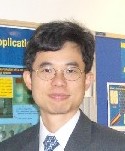
Che Ting Chan,
Hong Kong University of Science and Technology
Hosted by
Jer-Lai Kuo
Time: 2:20 pm -3:10 pm
Place: Room 104, CCM-New
Phys. building
Title:
Invisibility: fact or fiction?
Slides
Abstract
Can we make objects invisible? Invisibility has obsessed humankind for centuries and it is only very recently that researchers have shown that cloaking is not just fiction: it can be realized in principle through the development of new artificial materials called metamaterials and a new mathematical method called transformation optics. In this talk, I will review a few different strategies to realize invisibility and related notions. I will show that invisibility can be realized by (i) a special type of coating which can guide waves around an object, (ii) metamaterials that can cancel the scattering of other objects, (iii) resonance effect that can suppress optical excitation, (iv) a zero-refractive index medium if special boundary conditions are satisfied, and (v) using active sources to create a quiet zone. The limitations of these each of these approaches will be discussed.
Brief Bio
C.T. Chan received his B. Sc. degree from the University of Hong Kong in 1980 and his PhD degree from the University of California at Berkeley in 1985. He is currently a Chair Professor of Physics at HKUST, and the director of William Mong Institute of Nano Science and Technology. He has been elected a Fellow of the American Physical Society since 1996. His primary research interest is the simulation and understanding of material properties. He is now working on the theory a variety of advanced materials, including photonic crystals, metamaterials and nano-materials. He has over 200 publications and ~14,000 citations.
December 13, 2011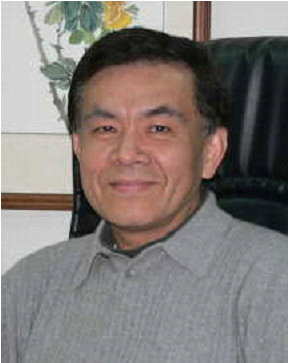
Cheng-Hsuan Chen,
CCMS, NTU
Hosted by
Chih-Wei Chang
Time: 2:20 pm -3:10 pm
Place: Room 104, CCM-New
Phys. building
Title:
Visualizing Atoms—Wonderful World of Electron Microscopy
Abstract
Aberration-corrected transmission electron microscopy has brought us an unprecedented spatial resolution below one angstrom making observation of single atoms a feasible task. In conjunction with advanced spectroscopies, such as electron energy-loss spectroscopy and energy-dispersive x-ray spectroscopy, it also becomes possible to differentiate atoms and carry out chemical and electronic structure mapping with atomic resolution. In this talk, I’ll review recent progress in the field and its applications in materials science.
Brief Bio
陳正弦教授早在1970年代早期電子能量損失能譜術(EELS)仍處於啟蒙階段時便投入開發與研究。其工作讓人們認識到EELS的強大分析能力,以至於今天EELS成了電子顯微鏡中不可或缺的工具。其後陳教授更運用電子顯微術解開了強關連電子系統中的電荷有序與自發相分離之謎,轟動一時!陳教授於2003年自美國貝爾實驗室返台任職台大凝態中心主任後,便致力於提昇台灣的學術水準。其工作已獲得2005年台法科技獎肯定。此次演講中我們將有機會從一位電子顯微鏡的先驅者對此領域的最新進展做精采的介紹。
December 20, 2011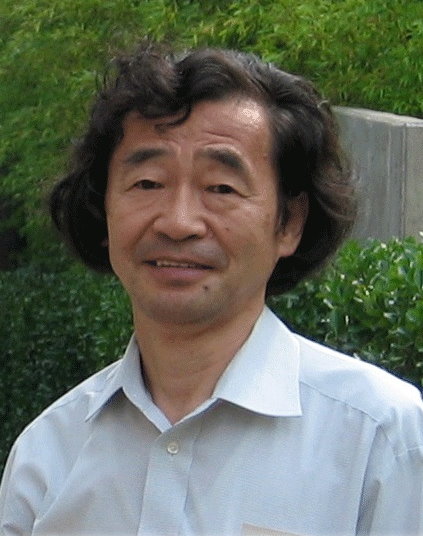
Tamiaki Yoneya,
University of Tokyo
Hosted by
Pei-Ming Ho
Time: 2:20 pm -3:10 pm
Place: Room 104, CCM-New
Phys. building
Title:
What is String Theory?
Abstract
String theory has a long history since its birth in the end of the 1960th. However, we are still in the midst of the process of exploring true meanings and new outcomes of string theory. In this talk, I would like to review the development of string theory towards an ultimate unification of all fundamental interactions including gravity. In particular, special emphasis is put on the importance of string theory as a possible framework in which the long standing conflict between quantum theory and general relativity may be resolved.
Brief Bio
Prof. Tamiaki Yoneya got his PhD at Hokaido University in 1974, and became a professor at Tokyo University since 1980. He is now an Emeritus Professor at Tokyo University, and a professor at the Open University of Japan.
Prof. Yoneya is a pioneer of string theory. He was one of the first persons who realized that string theory is a theory of quantum gravity. He won the first Nishinomya-Yukawa Memorial Award in 1986. He also won JPS Award for Academic Papers in 2007 for his works on the space-time uncertainty principle.
December 27, 2011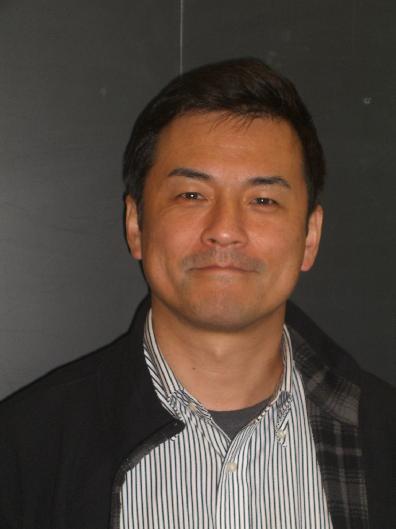
Naoki Kawashima,
University of Tokyo
Hosted by
Ying-Jer Kao
Time: 2:20 pm -3:10 pm
Place: Room 104, CCM-New
Phys. building
Title:
Quantum Monte Carlo and Non-Ginzburg-Landau Type Phase Transition
Slides
Abstract
Quantum Monte Carlo is one of powerful tools for clarifying quantum state of matter. Its applications ranges from quantum magnets to optical lattices. Here I summarize recent developments in the method and how it can be implemented in the world fastest computer. I then focus on how a class of peculiar quantum phase transitions have been discovered by this method. The transition is realized in the familiar antiferromagnetic Heisenberg model extended to the SU(N) symmetry.
Brief Bio
Dr. Kawashima is a professor at Institute for Solid State Physics, University of Tokyo. He obtained his PhD in physics at Tokyo University in 1992. After working as a postdoc at Los Alamos National Laboratory, USA, for 1993-1995, he moved to Toho University (1995-1998) and Tokyo Metropolitan University (1998-2004). Then he came back to Tokyo University and has been working there since 2004. He received Ryogo Kubo Medal in 2002 for his work in quantum Monte Carlo method.
January 3, 2012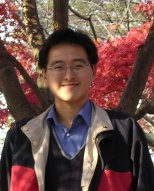
Kai-Feng Chen,
NTU
Hosted by
Jiunn-Wei Chen
Time: 2:20 pm -3:10 pm
Place: Room 104, CCM-New
Phys. building
Title:
Wanted: the Higgs boson, dead or alive?
Slides
Abstract
On December 13, 2011, the European Organization for Nuclear Research (CERN) held a seminar. The two biggest experiments at the Large Hadron Collider (LHC), ATLAS and CMS, presented the status of their searches for the Higgs boson. The discovery of Higgs boson would confirm the theory put forward since 1964, and is already a solid foundation for the Standard Model of particle physics. The Higgs boson, if it exists, is short lived and can decay into many different ways. Particle physicists in ATLAS and CMS collaborations have studied several channels. Most of the possible heavier regions on the mass of Higgs boson have been excluded, but the experiments also see small excesses in the low mass region. These results are based on the studies of data collected in 2010 and 2011, and it is sufficient to make significant progress in the search for the Higgs boson since the studies presented in the summer conferences. In this talk, an introduction to the Higgs boson searches, an review on what had been shown at the CERN seminar, and a midterm conclusion will be presented.
Brief Bio
自大學以來,陳凱風副教授在技術上從未離開台灣大學,是個「純種的台大人」。而實際上,自從1999年加入高能實驗團隊以來,有很長一段時間都待在日本KEK參與B介子工廠的Belle實驗,並於2005年拿到Ph.D.。2006年後逐漸轉移研究重心至瑞士日內瓦的核子物理研究中心(CERN),參加大強子對撞機(LHC)下的CMS實驗。近年來與台大團隊致力於尋找從未被發現的重夸克以及其他新物理訊號,同時也管理大多台大團隊在CMS實驗下的數據分析工作。此次演講將會基於於CERN的2011年終記者會內容,替大強子對撞機最重要的研究目標,也就是希格斯玻色子(Higgs boson),作一個完整的介紹。













